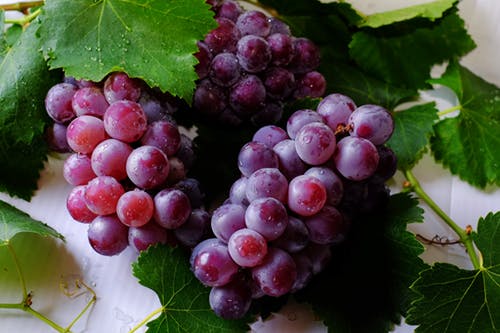Posted: Jul 26, 2019

While total wine sales were mostly flat, prices continue to rise.
California wine grape growers may not be lifting their glasses in toast to 2018 as the year was marked by “mixed messages,” according to one industry leader.
Shipments of California wines last year were up a paltry 1.5 percent after three years of relatively flat shipments and a 2017 season that saw the first statistical decline – albeit just 0.1 percent – in a long time.
Allied Grape Growers President Jeff Bitter characterized last year as one of “mixed messages” during his annual presentation to members. Bitter cited conflicting media messages that ranged from doom-and-gloom to rosy.
Bitter said the industry is perhaps stinging a little more than usual from the flat sales they saw over the past several years as a 10-year run of steady growth leading up to 2012 likely made the industry a bit complacent. Prior to the recent period of flat growth, the California wine industry enjoyed combined annualized sales averaging nearly three percent for at least a decade. According to Bitter, that was long enough for wineries to begin building business models that now must be reevaluated.
“The industry builds a model of supply, production and sales around these trends,” Bitter says. “Now when you have a period of time with flattening sales, people are going to start reacting in a negative way.”
Prices not flat
While the wineries may not be selling much more wine their prices to consumers aren’t flat, according to Bitter. This has yet to affect some buying attitudes as consumers are not necessarily chasing lower bottle prices as premiumization still seems to be working for the wineries. The positive economy continues to incentivize consumer trends towards more expensive bottles of wine, which he says tends to change only with recession.
The good news is consumers don’t seem to be drinking less wine. Still, they’re being selective in what they buy. On the grower side this means planting contracts are still being signed for various varieties as less-productive vineyards are replaced by higher-producing, better quality vines.
“But the reality is the consumer is constantly shifting,” he said.
Some positive moves in the wine grape industry suggest better opportunities ahead to sell more California wines as states that have had long-standing prohibition-era regulations against direct shipping wine across state lines are relaxing those regulations. Still, the East Coast markets are viewed as close geographically to Europe as they are to the West Coast, which is impacting domestic sales.
Further hurting California’s cause is the disparity between what the European Union spends to market its wines to U.S. buyers – particularly those on the East Coast – compared to what California spends to promote itself.
“I wish we could invest that kind of money promoting our product abroad,” Bitter said.
As a result, Bitter says East Coast buyers figure they can just as easily import European wines as they can buy California wines.
Because California does not sell a significant amount of wine into China, the trade war between them and the United States is not much of a factor for wine grape growers here, he continued. Still, from a competitive standpoint, trade wars and tariffs can make U.S. products less attractive to foreign buyers, resulting in lost opportunity.
Pending consolidation
Perhaps a much larger issue for California wine grape growers will be Gallo’s recent offer to buy Constellation brands for $1.7 billion, which Bitter says could have “huge implications” on grower prices in the San Joaquin Valley. The move could also insulate the large company from economic woes as it will end up controlling more wine at a wider range of price points.
The deal must still clear Federal Trade Commission hurdles. Bitter says neither Gallo or Constellation have indicated how that will turn out.
Grape supply
If there’s one place Bitter says the industry is not seeing mixed messages, it’s on supply. Growers last year crushed a record crop in excess of four million tons. Bitter calls this the “new normal” as the industry believes it can consistently crush over four million tons, absent a disaster beyond grower control.
How this could drive grower prices going forward remains to be seen, but it’s not an optimistic message given flat sales. Data show that 2015, the first year of flat wine shipments, was also a light crop year, so wineries had little incentive to lower grower prices because of supply and demand. By 2018 the crop was nearly 10 percent larger than the average of the previous four years as demand remained flat. This led to greater fears of an oversupply, Bitter said.
“If wine shipments had maintained their decades-long growth trend we’d be talking about a shortage of grapes,” Bitter said. Instead, “we have a supply plateau higher than our demand plateau.”
Current bearing acreage does show a flattening in this growth trend as well, leading experts like Bitter to a level of optimism suggesting growers may be positioned to better adjust acreage to match demand. Bitter says the need to do this should not simply be quantitative, but qualitative. Growers need to adjust acreages while working to produce better grapes for better wine.
By Todd Fitchette
July 24, 2019
Source: Farmprogress.com
Go-Wine's mission is to organize food and beverage information and make it universally accessible and beneficial. These are the benefits of sharing your article in Go-Wine.com


The Wine Thief Bistro & Specialty Wines is a locally owned small business in downtown Frankfort, IL offering world class wines in a relaxed, casual gathering spot for friends and family. Offering world class virtual tastings and touchless carryout.
https://www.twtwineclub.com/aboutus
Go-Wine 25 Great Wineries in US selection prioritizes quality, value and availability.
www.go-wine.com/great-wineries-in-america
Tasting wine is a nice experience, but visiting the places in which wine is made is a magic moment. Available in New York City for touchless pickup.